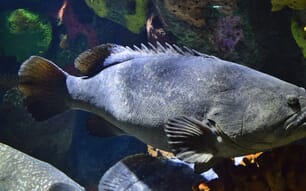White worms are a good feed for juvenile fish. As composters, they are easy to culture and fast growing.
They are also very nutritious and a good source of n-3 LC-PUFA.
During her presentation at Aquaculture 2016, in Las Vegas, USA, Alexis Bergman, Southern Illinois University Carbondale, shared the results of her investigation into white worms fed on five different feeds: Algae, stale bread, spent coffee grounds, leafy produce and brewery grains.
The proximate and fatty acid composition in the feeds and then in the worms fed on these feeds were measured.
In terms of feed proximate composition, the highest protein levels were found in the produce and brewery grains. The lowest levels were found in the coffee.
Looking at the proximate composition in the worms, the lipid levels were highest in worms fed coffee.
Worms fed coffee also had the highest saturated fatty acids - n-3 and n-6. MC-PUFA was highest from the coffee diet and small levels of LC-PUFA were also detected.
Worms fed the algae diets were highest for ARA and EPA. However, coffee was the only feed to produce DHA in the worms, although it was very low. This result was interesting as initially the coffee did not contain any DHA. Out of the five feeds, DHA was only registered in algae.
Overall, worms fed the algae feed had the highest protein, ARA and EPA levels but lower lipids.
And worms fed coffee had the highest lipid levels and some DHA but had lower protein.
From these results, Ms Bergman suggested that feed choices could be based on which is of most importance - fatty acid, protein or lipids, as what you feed decides what you get out of them.
As these feeds are low cost or free, it may even be feasible to pay a little to supplement the diet, depending on what you require.
Macroalgae Still has Potential
Another presentation, given by Michelle Walsh, Florida Keys Community College, during the same session at Aquaculture 2016, also looked at feed for white worms.
Ms Walsh focused her research on whether macroalgae could completely, or in part, replace bakers yeast as a feed as it is a cheaper option and contains beneficial PUFA's and DHA and EPA.
For the experiment, white worms were cultured in 120 cm3 organic soil in plastic containers (10 per container) over heat, which causes them to rise through the soil to the sides of the container where they can be easily harvested every three to four months.
The caulerpa algae was rinsed, dried and ground and then fed as the sole diet or as part of the diet alongside bakers yeast.
The results showed that worms did not grow well on the purely algae diet. On the 50-50 diet of yeast and algae, the worms had much higher production.
The 75 per cent yeast and 25 per cent algae diet did the best out of all the diets. It even did better than the purely yeast diet.
Following these results, Ms Walsh found that using isiforme algae offered even better results. Future research will now look at fatty acid and nutritional analysis.



